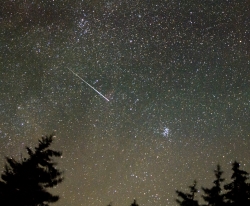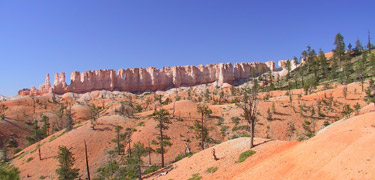
Courtesy State of Utah:
Utah Division of Wildlife Resources
Ben Franklin, Photographer
Rabbit Valley Gilia or Wonderland Alice-Flower
Photo: Ben Franklin,
Courtesy State of Utah: Utah Division of Wildlife Resources
Other Utah Endemics on DWR pages:
Deseret Milkvetch
San Rafael Cactus
Welsh’s Milkweed
When something is unique to a particular geographic area it is said to be endemic to that area. Not too long ago, while preparing for a lecture on Utah’s biodiversity, I was amazed to discover that Utah ranks sixth in the nation for its number of endemic species. Only Hawaii, California, Texas, Florida and Georgia have more. The Hawaiian islands are totally isolated –a factor that encourages endemics. California and Texas have enormous land area so I’m not surprised they have the space for more species to evolve. And Georgia and Florida are warm and wet states where you would expect biological richness! So what’s Utah doing so high on this list?
It turns out that our unique plants give us this high ranking. Utah has 2602 plants in all plus 393 subspecies or varieties. With 247 endemics Utah has an endemism rate of 8.2%. That’s pretty amazing.
Some areas of Utah have a lot more endemic plants than others. The Colorado Plateau in the south and east of Utah has the most. On the Plateau, erosion has exposed a long succession of different rock layers, and the rock has weathered into a patchwork of locally unique soils. Ecologists have found that isolated or peculiar soil types are like a nursery for endemics. Fine textured soils, saline soils or those that are highly alkaline are associated with highest levels of endemism.
Environmental extremes in the desert such as high temperature or low rainfall prompt evolutionary adaptations that eventually lead to speciation. For example, cushion plants are common on the Plateau—these are compact, low growing, mats often with large and deep tap roots adapted to slow growth in a nutrient- poor and water-restricted environment. In Utah deserts, many different buckwheat and milkvetch species adopted the cushion plant structure thus forming new species.
Variations in elevation can isolate species and create localized versions of widespread plants. High elevation areas can act as islands within the Colorado Plateau separating plants into distinct populations until they diverge over time. The La Sal, Abajo and Henry Mountains form mid-high elevation islands whose resident species are becoming more and more unique, forming endemics such as Chatterly onion, La Sal daisy, Cronquist’s buckwheat, Navajo Mountain penstemon, and Dwarf mountain butterweed.
We all know that Utah is a special place to live, but just knowing that our plants are so unique is another good reason to go out and explore.
Credits:
Photos: Courtesy State of Utah; Division of Wildlife Resources
Text: Stokes Nature Center: Jessica Welsh and Holly Strand
Sources & Additional Reading:
Stein, Bruce A. 2002. States of the Union: Ranking America’s Biodiversity. A NatureServe Report Prepared for The Nature Conservancy. Arlington, Virginia: NatureServe. https://www.natureserve.org/Reports/stateofunions.pdf
Utah Division of Wildlife Resources June 1998. Inventory of sensitive species and ecosystems of Utah: Endemic and rare plants of Utah an overview of their distribution and status.
Utah Native Plant Society. January 2007 Volume 30 No.1 UNPS Annual Members Meeting, Oct 21, 2006, Logan, UT.
Welsh, Stanley L.1993. A Utah Flora (second edition) Provo: Brigham Young University.



